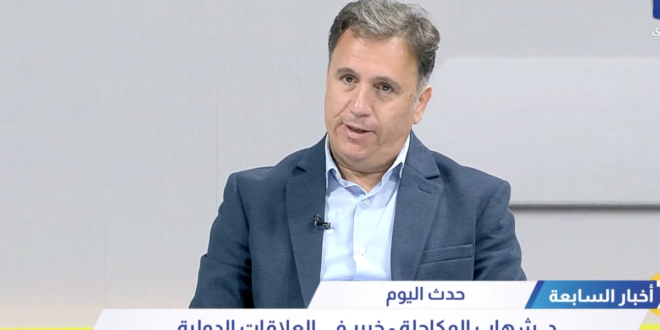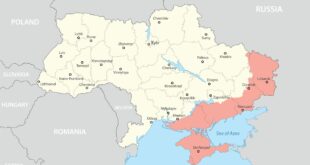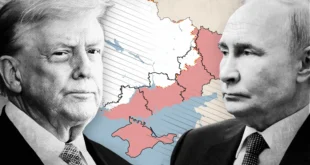Dr. Shehab Al Makahleh
As the new American president, whether Kamala Harris or Donald Trump, takes office, a critical issue awaits on their agenda: the reality of World War III. Contrary to popular belief, World War III is not a distant specter but a grim reality unfolding before our very eyes. Unlike traditional clashes of empires and armies, today’s war is a hydra-headed monster – a tangled web of low-intensity conflicts, proxy battles, drone strikes, and covert operations that erode global peace and security.
The Middle East: A Case Study
The Middle East exemplifies this shift. The Israeli-Palestinian conflict, the longest-running active conflict since World War II, highlights the complexity of modern warfare. It involves multiple actors with competing ideologies and strategic goals, making resolution elusive. The conflict has drawn in regional and global powers, further complicating efforts to achieve peace.
Similarly, the Syrian civil war has transformed from a localized tragedy into a proxy battleground. Major powers like the United States, Turkey, and Iran have established their spheres of influence, perpetuating a conflict that has displaced millions and destabilized the region. The distinction between combatant and bystander has blurred, creating a chaotic environment where it is difficult to determine who is fighting whom.
The War on Terror: An Opaque Struggle
The “war on terror” exemplifies the diffuse nature of modern conflict. Operation Inherent Resolve, led by the US, involves over 80 nations combating ISIS in multiple regions. The true extent of these nations’ involvement remains opaque, fostering distrust and conspiracy theories. This lack of transparency destabilizes volatile areas and complicates international relations.
Yemen: A Hidden War
Yemen is another illustration of this trend. A coalition of 10 countries, including the US and UK, conducts airstrikes on Houthi targets, yet the details of these operations are murky. This secrecy is a hallmark of contemporary warfare, where wars are waged in the shadows with devastating consequences for civilians.
Europe: A New Frontline
Ukraine’s conflict with Russia underscores the modern war’s diffused nature. Despite initial fears of large-scale battles, the conflict consists of smaller engagements. The expansion of NATO activities near Russia’s borders heightens the risk of direct confrontation, illustrating the complexity and danger of current geopolitical dynamics.
Asia: Regional Tensions
The South China Sea and the Korean peninsula remain flashpoints. China’s militarization of artificial islands and the US’s increased naval presence exemplify arms race that risks escalating into open conflict. The Korean peninsula, with its heavily fortified DMZ, is a constant reminder of the potential for renewed hostilities.
South Asia: Nuclear Brinkmanship
India and Pakistan’s volatile relationship further illustrates the dangers of modern conflict. Both nations have rapidly developed their nuclear arsenals, driven by strategic concerns and mutual distrust. This arms race increases the risk of accidental escalation, where a single miscalculation could have catastrophic consequences.
Africa: A Continent in Conflict
Africa faces numerous conflicts involving state and non-state actors. From Angola to Sudan, battles between armed forces, terrorists, and mercenaries create instability. Major powers, including China, Russia, and Western nations, are involved in counterterrorism efforts that often exacerbate the situation, providing fertile ground for new conflicts.
The Erosion of Neutrality
Traditionally neutral countries find it increasingly difficult to remain uninvolved. Switzerland and Austria have provided arms to Ukraine, while Sweden and Finland have joined NATO. This shift underscores the interconnectedness of modern conflicts and the challenges of maintaining neutrality.
The Path Forward: Diplomacy and Transparency
Addressing this multifaceted conflict requires a paradigm shift. Diplomacy, conflict resolution, and a commitment to a rules-based international order are essential. Transparency in military operations and clear communication between nations can build trust and reduce the risk of escalation.
World War III is not a future threat but an ongoing reality. Recognizing and adapting to this new form of warfare is crucial. The global community must prioritize diplomacy and cooperation to navigate this complex landscape. By dismantling the structures that perpetuate conflict and fostering a transparent and rules-based order, we can work towards a more stable and peaceful world. The new American president, whether Kamala Harris or Donald Trump, will need to address these issues with urgency and insight to steer the world away from the precipice of perpetual conflict.
 Geostrategic Media Political Commentary, Analysis, Security, Defense
Geostrategic Media Political Commentary, Analysis, Security, Defense





